Mark D. Jacobsen's Blog, page 4
March 12, 2022
New Podcast: From The Green Notebook
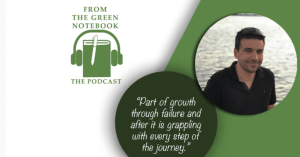
I’m delighted I had the chance to sit down with Joe Byerly at From The Green Notebook for a podcast about defense innovation, reflection, personal growth, and my book Eating Glass: The Inner Journey Through Failure and Renewal.
This is one of the best discussions I’ve had about the unique challenges and opportunities of leaving the “well-lit” path in DoD and making unconventional career choices–a common reality for many of us who care about creating change inside our organizations.
Joe and I go back a long way, as we discuss in the podcast. We met at the first annual conference of the Defense Entrepreneurs Forum, which was a pivotal experience for both of us. A group of young grassroots military innovators had been steadily finding each other and forming relationships online, culminating in the decision to hold a conference so we could all meet face to face. Joe and I met at that conference and although we only loosely kept in touch afterwards, that conversation was apparently influential for both of us and we’ve admired each other’s work from afar. That conference gave Joe the confidence and courage to start seriously blogging; years later, From the Green Notebook has become one of the best resources available for teaching military members (and the general public) about leadership, personal growth, self-reflection, and other related topics. So it was a real pleasure to reconnect after all these years, catch up, and compare notes on our respective journeys.
December 6, 2021
Violating the Cold Equations

We are living through dark times, which is reflected in our preferences in art and entertainment. For years Americans have shown an insatiable appetite for post-apocalyptic and dystopian stories, perhaps to help themselves cope with the real-world dystopia we often seem to be living in.
I’ll admit to sharing this fascination with dystopia. My fiction writing often explores how good human beings cope with breakdown. My novel The Lords of Harambee is about how members of a shoe-string peacekeeping operation confront a genocide, and I’m finishing the first draft of a post-apocalyptic novel set in Jordan.
My ruminations on breakdown are firmly rooted in the real world. I have given twenty years to military service. I spent much of that time studying how to prevent state collapse and restore order in shattered countries. It’s easy to feel like all that was in vain, especially as I watch the political turmoil in our own country and contemplate the disastrous end to the American expedition in Afghanistan.
Yet in the past few months, a new current in Science Fiction has caught my interest: many SF writers are tired of dystopia.
I recently came across the term hopepunk, a nerdish label for stories that pushes back against the bleak dystopianism of our age. It sits between nihilistic grimdark tales and noblebright stories that pit white-shielded knights the forces of evil. Alexandra Rowland, who coined the term, wrote that the fight is the essential thing. “Hopepunk says that genuinely and sincerely caring about something, anything, requires bravery and strength.” The genre is about a relentless fight to build a “better, kinder world, and truly believing that we can get there.” Hopepunk makes an existential proclamation to the universe.
The label has flaws, as numerous critics pointed out. It is nebulous enough to mean almost anything. I agree, but the term resonates. We need it today. Even if the term is superficially banal, the “punk” reminds us that such determined hope is countercultural in today’s world. This kind of hope is angry and hard-edged, but it’s still hope—and it should inspire us to action.
Tracing the The Cold EquationsI’m on vacation today, and spent my morning tracing the lineage of a famous SF short story called The Cold Equations. What makes the story fascinating is that writers keep revisiting it, and each retelling reflects the spirit of the age. In this lineage we can see status-quo resignation evolve into fiery determination to create change.
What set me on this exploration was Aimee Ogden’s new story The Cold Calculations (read for free, consider supporting Clarkesworld), a retelling that brings a hopepunk spirit to this old classic.
(spoilers follow for the older stories but not Ogden’s)
Godwin’s “The Cold Equations” (1954)In Tom Godwin’s “The Cold Equations” (1954, full text here), the pilot of an Emergency Dispatch Ship (EDS) discovers a teenage girl stowaway. These lightweight ships have little mass and carry razor-thin fuel margins, so the extra mass of a stowaway will cause a ship to run out of fuel and crash. Physics dictates a brutal necessity, codified in law: stowaways must be jettisoned out the airlock. The compassionate pilot tries to find some way to escape the cold equations, but in the end, he succumbs and jettisons the girl.
I vividly remember reading the story as a teenager. It felt contrived but also powerful—a way of capturing the hard austerity of space, but also a vivid thought experiment. I thought a lot about the story when I wrote Celestial Object 143205, which is more optimistic but presents a similar vision of the unforgiving harshness of space.
However, the story has provoked no shortage of outrage.
Some saw a streak of misogyny, as the story’s male characters suffer in their effort to save a woman from the consequences of her foolishness.
Many felt the story was too contrived. Godwin had to carefully engineer every aspect of the story to justify its appalling conclusion. This was not easy to do; editor John Campbell sent back three drafts in which Godwin found ways to save the girl, insisting she must die.
Cory Doctorow wrote a scathing critique. The cold equations did not kill the girl; the author did. Doctorow writes, “[The story] is, then, a contrivance. A circumstance engineered for a justifiable murder. An elaborate shell game that makes the poor pilot—and the company he serves—into victims.”
By focusing on the inexorable logic of the cold equations, the author lets the real culprits off the hook: executives, managers, and engineers who designed such a tenuous interplanetary resupply infrastructure.
Sakers’ “The Cold Solution” (1991)Almost forty years after “The Cold Equations” appeared, Don Sakers published The Cold Solution in Analog, which won a “Reader’s Favorite” award that year. The story exactly mirrors the original, except a female pilot discovers a young boy stowed away. In the end, the captain says she would give anything to save his life—and a solution becomes clear. She and the boy wake up in a hospital ward, regenerating missing multiple limbs that she sacrificed with her laser knife.
In an afterword, Sakers writes that he saw the grimness of “The Cold Equations” as a necessary corrective to an earlier generation of SF “that said it was always possible to come up with a new force, ray, or vibration that could save the day.” At the same time, however, he saw “The Cold Equations” as rooted in a debunked view of the universe: clockwork Newtonian mechanics, hierarchical, rules-based, binary, and stereotypically male.
Sakers wanted to write in a stereotypically female “networked, exceptions-based, fuzzy-logic way” more consistent with a quantum mechanics universe (he issues appropriate caveats about the limits of these gender stereotypes).
I found this story a bit tedious, particularly reading it back-to-back with the original. Its main contribution is suggesting a “solution,” but if you view the original merely as a provocative thought experiment, then a solution was never really needed.
Still, the story is interesting because of how it reflects changing attitudes between 1954 and 1991. Authors like Sakers refused to accept a rigid, hierarchical view of the world that implicitly justified the status quo.
Ogden’s “The Cold Calculations” (2021)Aimee Ogden’s new story in Clarkesworld takes this critique a step further. Ogden isn’t content to save one stowaway; she is indignant at a system that creates such appalling moral dilemmas in the first place. In the first lines she asks, “when once upon a time becomes so many, many times, surely someone must think to ask: had to die? On whose authority?”
The cold equations are simple physics, she writes… “Unless, of course, someone’s been fudging the numbers.”
The story has the same setup as “The Cold Equations”: a dropship pilot discovers a young female stowaway. Ogden breezes through the necessary contrivances in the first few paragraphs so we can get to the real story: how the pilot will cope with a broken system that has forced this choice upon him.
Ogden’s anger is rooted in the real world. She makes that clear by interweaving multiple vignettes from modern history, in which characters suffer at the hands on corrupt organizations focused on power and enrichment. I found these disorienting at first until, on second reading, I googled and realized they were all based on real people and situations (the vignette about Soyuz-1 was chilling; I can’t believe I never knew that piece of history).
This is a grittier story than its predecessors, deliberately harnessing pain and anger, with a ship’s supply worth of F-bombs along the way. Yet it also burns with compassion and self-sacrifice. This is a protagonist who will not go quietly into the night, nor will the supporting characters in the vignettes.
I won’t spoil the ending, except to say that the story ends with an ambiguous twist that raises more questions than it answers, and leaves the reader wanting a full accounting from the corporation. It was perhaps too ambiguous, hinting at sinister machinations that aren’t adequately explained, but I thought it was a great story overall.
From Surrender to AgencyThese three stories reflect a broad societal trend from accepting power structures to overthrowing them. Ogden’s story even features an omniscient narrator urging readers to find their anger and overturn the tables. This is potent stuff, revolutionary stuff, Jesus-in-the-temple-throwing-out-the-moneychangers-with-a-whip stuff.
The characters across these stories show increasing agency. In “The Cold Equations”, the protagonist is helpless; in “The Cold Solution”, she finds a way to save a life; and in “The Cold Calculations”, he stands ready to challenge an entrenched interstellar corporation.
As a political scientist and military officer, I have mixed thoughts about calls to overturn power structures. On the one hand, mass mobilization against entrenched power structures has led to some of the greatest advances for justice and equality in history. On the other hand, human societies need some measure of hierarchy to function. Revolutionary fervor goes so quickly awry, and the inability to form hierarchical institutions spells anarchy (you can read my dissertation if you’re bored). A healthy civilization requires a constant tension between stability and revolution.
Despite my broader reservations, I do support the role of writers and artists who embody the force for change and renewal. They play a critical role in a democratic society. More than anything, I’m inspired by the SF movement underway, during these dark times, to present optimistic visions in which heroes turn anger into hope and fight to build better futures.
Image Credit: “Sci Fi Space Airlock” by Shaun Davies
November 17, 2021
Backstory: Destroyer of Worlds
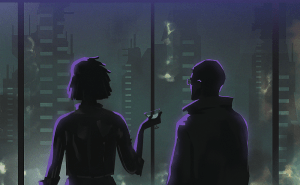
I am starting a new “Backstory” series, in which I describe the background and process of writing my fiction. You should read the story first. Destroyer of Worlds is available for free at Inkstick media.
I find it easiest to write fiction when structure is imposed on me, so I always watch for themed contests and anthologies. I wrote The Wasp Keepers for an anthology about the human cost of war, Fitness Function for a CIMSEC contest about maritime security, and Celestial Object 143205 for an anthology about derelict ships.
I especially like themed anthologies and contests when they touch on military and foreign policy issues, so when I stumbled across Inkstick‘s contest about nuclear apathy, I knew I had to submit.
The reality of the nuclear threatI studied nuclear policy and strategy extensively at SAASS. At Stanford, I was a Teacher’s Assistant for Scott Sagan, one of the foremost scholars on nuclear weapons. As part of his class, we ran a simulation involving a Nuclear Nonproliferation Treaty (NPT) review conference. Stanford’s Center for International Security and Cooperation also runs a project called Preventing Nuclear Proliferation and Terrorism, which provides a wealth of expertise on nuclear issues.
One of the amazing things about nuclear weapons is that they have not proliferated further or been used more. The nuclear taboo is real. The NPT has worked better than any international treaty should, given that it has no real enforcement mechanism and institutionalizes an “unfair” gap between the nuclear haves and have-nots. The doctrine of mutually assured destruction (MAD)—which is often viewed as the ultimate expression of reckless military insanity—was actually an extraordinary achievement that successfully prevented nuclear war between the US and USSR, amid a conflict spiral that both sides felt helpless to control.
Yet we are also extremely lucky. The world approached the brink of nuclear annihilation multiple times. The Cuban Missile Crisis is the best-known example, but numerous mistakes, accidents, and false alarms could have triggered the apocalypse. The NPT is always under threat, rogue actors continue to seek and build nuclear weapons, and other international rivalries could escalate to include the use of nuclear weapons.
We now face a curious problem. Our international regime for preventing the proliferation and usage of nuclear weapons has worked so well that most people take it for granted. Yet nuclear weapons remain the most terrifying technology on the planet and pose a truly existential threat to humanity. The norms and institutions that keep the nuclear genie bottled are old, rickety, and fraying. Many of the technologies are ancient; up until a few years ago, the U.S. nuclear enterprise relied on 8″ floppy disks. In a world of “normal accidents”, we are always one mistake away from a catastrophe. The question is not if another nuclear weapon will ever be used, but when.
My experiences of nuclear apathyYet despite the the very real threat, nuclear apathy is real. I have two relevant stories from TA’ing that class.
On the first day of class the professor asked his undergraduates what security challenges they thought posed existential threats to the United States. Their answers reflected the spirit of our age: Global warming. Fake news. Political polarization. Environmental destruction. Donald Trump. I would actually agree with a couple of those, but the absence of military threats—and especially nuclear weapons—was striking.
My second relevant memory was of a guest speaker who had spent his life studying nuclear weapons and working on nuclear policy. He had dedicated his semi-retirement to fighting nuclear apathy every way he knew how and showed a nightmarish video he had helped produce. This wizened old policymaker held these young undergraduates spellbound as he sagely described the horrors of nuclear weapons. For that one brief class period, he made them care.
Writing the storyI only learned about Inkstick’s nuclear apathy contest the day before the deadline.
When I have constraints but no clear story idea, I brainstorm on a clean sheet of paper. I jot down every idea, no matter how half-baked. Getting started is tough, but once I get in the flow, ideas bubble up. Each idea branches into others, especially if I deliberately try to apply twists.
The point of the contest was to shake people out of their nuclear apathy. The obvious answer would be to write a story about a nuclear detonation, or maybe a desperate race against nuclear-armed terrorists.
However, I tend to favor more subtle psychological stories. What if my story was actually about nuclear apathy itself, and an extreme effort to overcome it? How far might activists go to shake Americans out of their complacency?
Presumably they wouldn’t actually detonate a nuclear weapon. What, then?
I have an abiding interest in virtual worlds so scribbled that down on my list. Maybe somebody sets off a nuclear weapon in a virtual world? Users would experience much of the horror of a nuclear attack without any real damage. That could work. But who would initiate such an attack? Maybe Russia or China. But what would they gain from that? Twist: maybe part of the U.S. government would launch an attack to whip up support for nuclear modernization or a new arms control initiative. But that seemed extreme and probably illegal for a democratic government.
It would have to be a radical non-government group. That led me back to the memory of the wizened policymaker and his video aimed at shaking students out of their complacency. What if he had access to a virtual world? What scenarios might he create to bring the threat to life?
I caught a glimpse of another character: a video game designer tasked with designing the virtual apocalypse. His daughter was an addict of the game. I saw him holding a drink, trembling, waiting for the attack to commence while his daughter played the game in the next room.
I normally spend considerable time fleshing out characters before I actually start writing, but since I had less than 24 hours to deliver the story, I couldn’t spare the time. I dove in and wrote without a map, trusting my subconscious to guide me along.
Along the way, I thought back to those Stanford students who fretted over the existential threat of fake news but never even considered the threat of nuclear weapons. I realized that even the carnage of a virtual apocalypse might get overlooked, compared with more trivial concerns about the loss of a beloved source of entertainment and profit.
I wrote the story in two sittings on my back patio, interrupted only by coffee breaks and a run. I normally spend a couple weeks revising stories, but lacked the time in this case. The resulting story is less polished than some of my others, but I think it captures my initial idea and evokes the sentiment I hoped it would: a realization of how hard it is to make the general public care about a technology that can annihilate the human race.
November 12, 2021
Fiction: Destroyer of Worlds

I have a new short story out! Today Inkstick Media ran Destroyer of Worlds, which took third place in its contest soliciting stories designed to shock readers out of nuclear apathy. In a few days I’ll share a bit more how this story came to be, but in the meantime, enjoy the story!
I’m especially thankful to Nadaskii for the gorgeous artwork, which perfectly captures how I envisioned this scene. The casual way Cassie holds the martini glass brilliantly captures the story’s surreal vibe. I didn’t realize Inkstick would commission artwork, so when they sent me the draft sketch, I was blown away. I’m still new enough at this that seeing another artist create an interpretation of my work is magical. Then again, maybe that will always be magical!
The first and second place entries were also great and worth a read: Paddlefish by Madison Hissom and Five Twenty Nine a.m. by Austin Mullen.
By the way, while I’m writing about Inkstick Media: I have always loved Dune. I read it for the third time in anticipation of Denis Villeneuve’s new film, which I loved. I thankfully saw it on IMAX, then went back with my boys so they could experience it. With that said, Dune has a complex relationship with Arab history and culture, and Arab commentators have raised some valid concerns about the lack of Middle Eastern and North African (MENA) representation in the cast. My two years in Jordan sensitized me to these types of issues. I raise this now because Inkstick ran a great piece on the topic by Khaldoun Khelil titled Erasing Arabs from “Dune.” Khelil love Dune and actually helped write the Dune roleplaying game (RPG), so he offers a critique that is respectful and even affectionate while addressing the salient concerns.
October 3, 2021
A Grand Experience
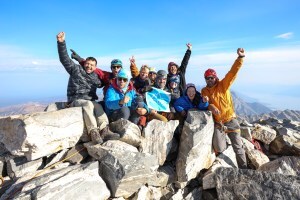
I wrote this post for the Paradox Sports blog. Paradox “is dedicated to transforming lives and communities through adaptive climbing opportunities that defy convention.” Check them out!
I learned about Paradox Sports’ Grand Teton climb as Kabul was falling.
The dramatic collapse of 20 years of U.S. foreign policy kept me glued to social media. I’d spent years flying C-17s, including more than 200 missions in Iraq and Afghanistan. Now I had friends flying desperate evacuation flights out of Kabul. I watched Facebook for any new scrap of information.
That was how I stumbled across a post from Paradox co-founder and military veteran D.J. Skelton, recruiting for an upcoming veterans climb up the Grand Teton.
The mountains had always been my solace. Climbing the Grand Teton with a group of veterans sounded amazing, but I thought Paradox only worked with adaptive climbers.
“I’d love to go,” I told D.J. “But I don’t have a disability.”
D.J. informed me that this trip was different. Every September 11th week, Paradox hosted two climbing trips for veterans. They welcomed all veterans, wounded or not.
“I want you there,” D.J. told me. “Even if it’s just to drag my ass up the mountain.”
As I prepared, I wondered how hard the Grand Teton would be. I had lopsided abilities. I regularly climbed outdoors, but always on single-pitch walls in walk-in crags. I had no experience with mountaineering or the alpine environment.
When I stepped off the plane at Jackson Hole and caught my first glimpse of the Grand Teton, I felt a prickle of fear. The peak looked formidable.
That was good, I thought.
I liked to climb at the edge of my abilities, where challenge brought growth. A little fear meant I was on the right track.
The climbing excited me, of course, but what really brought me to the Grand Teton was the promise of community.
I have always been introverted. My day job as an Air Force professor kept me in my head most of the time. A cross-country Air Force move had uprooted me from my community, and in the COVID-19 era, I found it hard to put down new roots. I was approaching my 20-year military retirement, anxious about transitioning, and asking hard midlife questions.
Then came Kabul.
I commissioned as an officer just months after September 11th. I’d spent my entire career engaged in the United States’ wars against terrorism and now, in one disastrous month, everything we had built at such high cost seemed to unravel. The Afghan government’s collapse raised hard questions about the sacrifices our country and Armed Forces had made.
I felt a barrage of emotions like grief, guilt, and shame. Mostly, I processed these alone. Climbing had helped sustain my mental health for years but what I really yearned for now was community.
The idea of climbing the Grand Teton with a group of veterans sounded deeply appealing. Even so, I had no idea what to expect. More than anything, I felt curious. What would it feel like to join a team on a Paradox trip?
We based in the rustic American Alpine Club’s Climbers Ranch, nestled on the plain beneath the ominous mountain skyline. I met the other seven veterans and three Paradox staff as they arrived. Even with the busy schedule over the next four days, we had leisurely breakfasts and evening hours to continue these conversations. My colleagues embodied everything I’d come to expect and love in military veterans. They were team-focused, goal-oriented, adventurous, and funny. We bonded easily.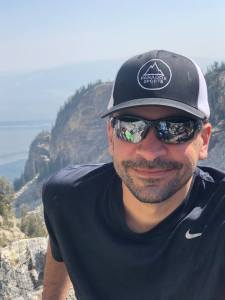
We spent two days with our amazing Exum Mountain Guides, learning the skills we’d need on the climb: gear, knots, movement over rock, belaying, rappelling, and communication. These skills were not particularly difficult for those who’d climbed before, but I marveled at my colleagues with zero experience who tackled multipitch climbs and overhanging rappels on their first day.
It surprised me how little we talked about our military service. Oh, it came up here and there. I got glimpses into my new friends’ life stories. Each person brought something to the mountain. A few had physical wounds. For most, the wounds were less visible. Some faced hardship in their personal lives. All of us, I think, felt the weight of twenty years of war.
But you would never have known that, spending time with our group. What defined my teammates was not their baggage but rather a deep commitment to growth, renewal, and continually expanding their limits—all within a team. We told stories. We laughed. We shared sunscreen and trail snacks and swapped gear and engaged in a thousand other small acts of mutual generosity and support.
We didn’t need to talk about the past, I realized. The mountains were enough.
 On our third morning, we began our ascent up the Grand Teton. Three miles of forest switchbacks gave way to strenuous uphill hiking through scree and boulder fields. We helped and cheered and encouraged each other along. When our guides raised the possibility of dividing our team based on skill level, our response was swift and unanimous: we would summit this mountain as one group.
On our third morning, we began our ascent up the Grand Teton. Three miles of forest switchbacks gave way to strenuous uphill hiking through scree and boulder fields. We helped and cheered and encouraged each other along. When our guides raised the possibility of dividing our team based on skill level, our response was swift and unanimous: we would summit this mountain as one group.
That night we camped at the Lower Saddle, at 11,700’ feet. We feasted on cold, foil-wrapped pizza, drank hot tea, and nibbled on chocolate for dessert. We repacked gear, laid out sleeping bags, and watched the evening shadows crawl up the steep, shattered granite still above us.
We rose at 0400, sipped instant coffee, and ate breakfast by headlamp.
At last, we started our ascent.
After trudging up a steep scree field, we each roped up with a partner and guide. My partner was Bruce, an Army veteran who had never seriously climbed before this week. After each harrowing move over exposed ledges, we fist-bumped. “Good job, brother,” became our mantra. When Bruce reached the “crawl”—a famous stretch of the Owen Spalding route that requires edging out over a vertical abyss—he didn’t hesitate. Finally, after seven short pitches of roped climbing, our guide stepped aside so Bruce and I could take the lead.
We scrambled up the final steps to the summit. There we grinned and embraced in the cold, clear air. Two by two, the rest of our team joined us. We all whooped and cheered and hugged and fist-bumped. One vet—severely wounded in Iraq many years ago—cried as he told us this was the hardest thing he had done since being wounded. His vulnerability opened the floodgates for the rest of us.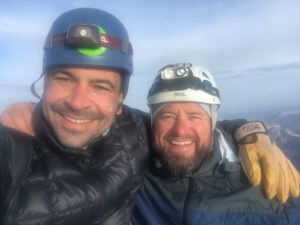
It was the summit experience every climber hopes for. Yes, the climbing was fantastic, but the trip was never really about the climbing. Climbing simply became a vehicle to confront ourselves—with all our hopes and fears—and emerge stronger. Our wonderful team provided mutual support and encouragement every step of the way.
I’m not sure exactly what I was looking for on this trip, but I’m satisfied that I found it. During our descent back to the waiting world, I had much to ponder. At a time when so much in our society seems broken, the trip reminded me of enduring core values: Brotherhood (and sisterhood!). Mutual caring. Encouraging each other—and sometimes hauling each other—onward. The healing power of nature.
As we prepared to descend, one of our guides swept his arm around, indicating both the shattered granite peaks and our own little tribe, standing in a circle in our puffy jackets and helmets and climbing harnesses. He said, “THIS is civilization.”
August 30, 2021
New Podcast: CFO Bookshelf
The post New Podcast: CFO Bookshelf appeared first on Mark D. Jacobsen.
August 28, 2021
New Podcast: Always in Pursuit
New podcast out today! I sat down with Mike Burke on the Always in Pursuit podcast to talk about failure, growth, and my book Eating Glass: The Inner Journey Through Failure and Renewal. I loved doing this one! Mike is such a thoughtful and engaging conversation partner, and he has done such a valuable service by encouraging others to tell their authentic stories.
Here is Mike’s introduction:
Failure!! How do we learn from it??Mark D. Jacobsen is an expert on that question. In the latest episode of Always in Pursuit Mark answers this and talks about his struggles and own demons.We also discuss his latest book “Eating Glass” which is 1 of 5 books Mike S Burke keeps on his desk. Order it! You won’t regret it.This episode is brought to you by our awesome sponsor Adyton.io who is effeciency of systems for many organizations!
The post New Podcast: Always in Pursuit appeared first on Mark D. Jacobsen.
August 24, 2021
Why You Should Tell Your Hardest Story
Later this week I am appearing on Mike Burke’s podcast “Always in Pursuit.” To accompany the podcast, I wrote this guest post for his blog. It is repeated here in its entirety, but be sure to check out Always in Pursuit for much more on these themes.
I’m going to venture a guess. Each day when you prepare for work, you strap on metaphorical armor. You’ve been at this a while and have developed a battle-hardened persona. You project confidence, ambition, and a relentless focus on success and mission accomplishment. You shrug off setbacks, roll with the punches, and laugh with your peers.
But underneath beneath that armor lies something you would never dare reveal: a self sometimes haunted by uncertainty and self-doubt. You carry wounds: scars from old failures, a lingering sense of shame, the trauma of broken relationships or abuse or catastrophe, the restless fear that you don’t have what it takes. These feelings might dominate your daily inner life or just drop by occasionally like an unwelcome guest, but they’re never entirely absent.
The details will vary, of course. We each walk our own journey. Some people seem immune to self-doubt. But we are all human, and for most people, that means we live with a shadow side that we fear revealing to the world.
Joseph Campbell taught us that every story is a variant on the same old myth: in our innocence we set out into a world that is strange and sometimes wonderful and often brutal. We face great peril, escape traps, and fight dragons, but our greatest battle is a confrontation with ourselves. At the heart of that journey lies what Campbell called “the innermost cave,” the place we most dread to go. It is the place we must finally enter if we are to ever grow into our truest, noblest selves. Think Luke Skywalker coming face to face with himself in Darth Vader’s mask in a vision on Dagobagh, or Frodo staring into the fires of Mt. Doom, facing his moment of ultimate temptation.
I want to issue you a challenge: you need to go there. You need to enter your innermost cave and then come back to tell the story.
My storyIf that admonition evokes terror, I understand. Five years ago, I went through a scorching season of personal breakdown. I had walked away from a promising trajectory as an Air Force pilot to pursue a passionate dream that combined innovation and education. The nonprofit I founded crashed and burned after a year and a half of wholehearted, nonstop work. My PhD research agenda collapsed, and I found myself feeling alone, having lost the faith of nearly everyone whose support I needed. Health problems surfaced and my mental health frayed. I became badly burned out but couldn’t get out from under the weight of my responsibilities. It took me a couple years to find a way through the ensuing dark night of the soul.
I eventually found my way into my innermost cave, where I began writing. I wrote dozens of pages of journal entries—raw, honest, vulnerable reflections on aspects of failure and its aftermath. I wrote about emotions like fear, anger, and disappointment. As time went by and I found my feet again, I wrote about the halting, uncertain journey back to health and renewed strength. Somewhere in there, I realized I had enough material for a book. I turned these reflections into Eating Glass: The Inner Journey Through Failure and Renewal. I thought the book could help others who were struggling in the aftermath of a failure experience.
That was when the magnitude of my choice became apparent. Do I tell this story? Do I dare reveal my self-doubt and weakness to the world? How would I ever survive this? I felt visceral, white-knuckled, paralyzing fear.
Which brings us back to you and your story.
Why we fear vulnerabilityMost of us are afraid to disclose our hardest life experiences. I believe we gain power over things by giving them names, so let’s inventory some of these fears. These fears are understandable but they are largely bullshit. As we go, let’s reframe each one properly.
I will be seen as weak. We imagine that others will never respect us again if we show the slightest crack in our facade of strength and confidence. REFRAME: It takes strength and self-confidence to show vulnerability. We respect authentic leaders who are brave enough to reveal themselves.I will be seen as strange. Nobody else feels this way. We think maybe we are uniquely screwed up. Surely normal people do not struggle like we do. REFRAME: Everybody has aspects of themselves, and stories from their past, that they fear to reveal. When people speak in vulnerability, their words resonate because we see ourselves.My story isn’t nearly as bad as what (insert name) suffered. We should shrug off our hardships and failures because they pale beside what others suffer. REFRAME: There is no room for comparison. Nobody should gatekeep each other’s deepest lived experiences. We all feel the whole range of human emotions, from soaring joy to deep despair. We each have our own story, and it’s ours to tell.I don’t have enough talent to tell my story. We worry about our lack of artistic abilities. We fear we won’t do the story justice. It will be dull, lifeless, and not worth anyone’s time. REFRAME: When we share from a place of vulnerability, talent barely matters. What connects with an audience is authenticity. We feel in our guts when someone speaks from a place of vulnerability. That is what breathes life into your story.Telling my story will damage my professional reputation. This might be the heart of our fear. If others see us as we really are, we will lose their love and respect. REFRAME: If somebody loses respect for you because you tell your authentic story, you probably don’t want to work with them anyway. The best leaders have empathy and high emotional intelligence. By confidently embracing your story, you exhibit those traits. Good leaders will see and respect that.The need to own your storyWhen you enter the innermost cave and come face-to-face with yourself, you realize that you have a story to tell. Maybe it’s a journey through the dark night of combat and then swimming back up to the light. Wrestling in the dark with the demon of addiction. Childhood scars that still haunt you. A broken relationship and the disorienting years that followed. A professional failure that left you questioning your own leadership ability.
Many of us spend years hiding from our own stories. We run the opposite direction from our innermost cave, like Jonah fleeing God’s imperative to go Ninevah. No matter how far or how fast we run, we can never outrun ourselves. That shadow eats at us from within. It affects our health. Our families. Our leadership. At some point, we will face a reckoning. Out of the depths some great whale will swallow us whole and drag us beneath the waters to that place we fear to go.
But here’s the thing: when you find the courage to enter that innermost cave (whether by choice or because you no longer have a choice), that encounter can change your life. It can begin a transformation within you. And when you go back out into the world and tell your story, you can bring that restorative, transformational power to other people. You will shine with a dark and mysterious luminosity.
Telling my story was one of the most powerful experiences of my life. Now I actively look for opportunities to share my story and help others tell theirs. That is why it was such a pleasure to join Mike Burke on the Always in Pursuit podcast this week (link forthcoming).
Here are just a few of the benefits that authentic storytelling brings:
You break the chains of fear. Only after I released my book did I realize the full extent to which fear had defined my life. I was terrified of my own story and how it might be perceived. Once I committed to owning that story, and the first supportive comments poured in, the relief was indescribable. Just as darkness cannot tolerate light, your fear of being revealed cannot survive openness and authenticity.You become integrated and whole, enabling future growth. So many of us are “stuck” in a life situation we can’t move past. Our souls are divided. When we own and tell our stories, we find wholeness. That split self becomes one, maybe for the first time in our lives. We grow deeper into our truest selves, and we now have the ability to keep growing and flourishing… to be always in pursuit.You have a basis for healing relationships. The same “stuckness” in our own souls can also impair our relationships. As we own our stories and gain comfort sharing them, it enables to us to have hard but necessary conversations with others. It helps us take responsibility and, when necessary, say “I’m sorry.” Not every relationship can be healed, but some can… or at least be put to rest.You can help others navigate their own life experiences. When you share in authenticity, you discover that so many people around you harbor their own private stories. Your courage and authenticity opens space for them to share. You can become a source of encouragement and strength and inspiration, which is perhaps the richest form of leadership.You develop empathy for others. As you grapple with your own journey, you gain empathy for others who are on their own journeys. That empathy can only make you a wiser and more thoughtful leader.You develop new relationships. Real conversations are rare in today’s world. Your willingness to go deep opens up a rare space in which real connection can happen and real relationships can be built.You help build community in a world that sorely needs it. We live in an age of toxic individualism, loneliness, and despair. The world needs healing and repair, and that has to begin in community—with authentic connection between human beings. The relationships you form through telling your story provide a solid foundation on which to build.The admonitionOwning and telling our stories is not easy. It often takes time, effort, and help from other people to untangle our own life experiences and find the essence of our stories. Entering our innermost cave might be the scariest experience of our lives, and telling that story to others might be even more frightening yet.
But it was for good reason that Joseph Campbell saw this mythic quest as the beating heart of human existence. This is the universal story, the story of what it means to be a human being.
Do the work. Enter the innermost cave. Discover your story, and when you do, take courage and tell your story to others. That is the first step towards the healing and building that we, our country, and our world so desperately need.
The post Why You Should Tell Your Hardest Story appeared first on Mark D. Jacobsen.
August 3, 2021
July 2021 Newsletter
Greetings, dear readers! It has been four months since my last newsletter. Partly that’s because I wanted to have enough new developments to make it worth your while. Also, even after a year at this, I’m still trying to figure out how to build a platform and community around my writing. This is still an exploratory season for me, as I try a wide range of things across my many different interest areas. That is fun, rewarding, and challenging, but doesn’t exactly contribute to a consistent brand or stable author platform!
With that said, let’s dive in with the news!
Eating Glass Audiobook Now Available
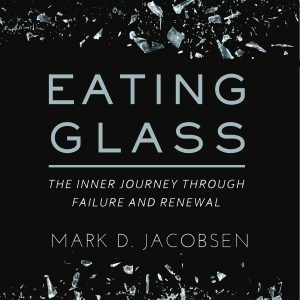
My biggest news is that the audiobook version of Eating Glass: The Inner Journey Through Failure and Renewal is now available through Amazon and Audible. This took me a few months longer than planned, as I had to climb a steep learning curve.
I spent a couple weeks perfecting an audio recording environment in my work office, only to have the AC permanently kick on for the summer—which entails a loud pipe in the ceiling continuously gurgling and chattering. So much for that! I started over at home, at odd times when my family was not around. My performance skills improved as I went along. By the time I reached the last chapter, I no longer liked my earlier performances, so I ended up recording nearly the entire book twice.
In the end, I’m quite happy with the result. I think reading my own story gives it a sense of intimacy and power, and hope listeners will agree.
Marketing Eating Glass has proven to be a considerable challenge, so if anyone knows influencers who might be interested in the book, I invite you to spread the word or let me know about opportunities.
Derelict is Now Available
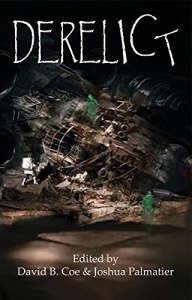
My new short story “Celestial Object 143205” is now available in a new anthology titled Derelict. When I saw the announcement that a forthcoming SF/F anthology would be dedicated entirely to derelict ships—one of my favorite tropes—I knew I wanted to contribute a story. The challenge is that so many stories about derelict ships feel exactly the same. I sat down with a notebook and pen to brainstorm. I asked myself, “What’s the most unique twist on derelict ships I can possibly provide?” I don’t want to give away too much, but I’ll just drop this picture here!

I love this story; it’s probably the most technically perfect story I’ve written. Derelict is published by a small press, but I hope it gets noticed and read.
In addition to being a lot of fun, the story features the United States Space Force (USSF). As the new Service finds its feet, a debate has unfolded about the degree to which Science Fiction should shape its identity. SF has always inspired dreamers and played an outsized role in shaping our visions of space, but its relationship with the USSF has been awkward and sometimes cringeworthy. Its formation coincided with the launch of the Steve Carell comedy Space Force, its logo bears an uncanny resemblance to Star Trek, and its use of the name “Guardians” for members evokes crass talking raccoons and green-skinned aliens. Even more serious SF has set up a lot of false expectations about what the Space Force can do. At least with today’s technology, the Space Force will not be operating starcruisers. My friend and SAASS professor Dr. Wendy Whitman Cobb set off some fireworks when she argued in the Space Power Journal that USSF leaders should focus on “de-science fictionalizing.”
I mostly agree with these critiques, but I also believe in the power of SF to help us think through how to approach the future. I love serious, thoughtful SF that begins with the real world and its challenges and constraints and explores outward from there, so I took Dr. Whitman Cobb’s piece as a constructive challenge. Can we write serious SF to help USSF leaders think about the future? “Celestial Object 143205” features the Space Force’s first interplanetary spacecraft. This is not the Starship Enterprise; it is a frail tin can, behind schedule and over budget, aimed at keeping just a few astronauts alive for long months as they cross vast gulfs of space. What does strategic competition look like in that kind of harsh, unforgiving environment? Check it out.
I have a Mind Tools YouTube Series
A new class of students began at SAASS last month. SAASS does not have room in its curriculum to teach study skills or tools, so as an experiment, I created an optional YouTube series I call Tools for the Life of the Mind. It covers frameworks and tools for organizing knowledge, and includes some discussion of my own personal workflows. If that catches your interest, I encourage you to take a look.

Wasp Keepers translated into Polish
The first foreign translation of my work is underway! A couple months ago, Fantastyka, the oldest Polish speculative fiction magazine reached out about translating and publishing my story “The Wasp Keepers” from the War Stories anthology, about a U.S. military occupation of Syria enforced by micro-drones that offer perfect sensing and perfect kill capability. It was such a wonderful surprise to see this interest in a story I published 7 years ago, and amazing to see the final result—especially the custom artwork.
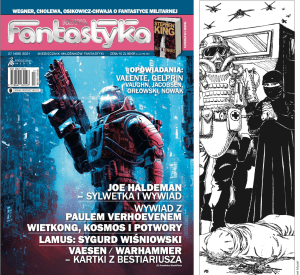
Other Writing News
I’m still writing away. I just submitted a new story to a contest about “breaking through nuclear apathy”, hosted by Inkstick Media, and am still looking for homes for several unpublished stories.
My big writing project the past few months has been a near-future, dystopian, literary SF novel set in Jordan. Thematically, it explores what happens when unfettered polarization, fear, and hatred are taken to their logical conclusion. It also explores the sense of homelessness and loneliness we can feel if we refuse to join the frenzy of escalating, reciprocal hatred. The Israeli-Palestinian conflict plays a prominent role, but more and more, I feel like the novel has become a parable for the polarization of American society.
I first conceived of the novel a decade ago while living in Jordan but felt overwhelmed by the novel’s many challenges. I still feel overwhelmed, but I’m finally trying to write it. I’m about 70,000 words in and am at the stage where every single word I write feels irredeemably awful. I’m trying to trust the process, and hoping the story comes together in revisions. I think it will; that’s the bewildering magic of the writing process.
I’ve also been writing extensive reflections that I’m hoping will become another “life” book like Eating Glass. They center on the tension many of us feel between our desire to escape the world and our need to engage with it. I have always felt an almost painful longing to escape modern life to some quiet cabin in the mountains, and I’m fascinated by the massive wave of #vanlife-style escapism currently underway in the United States. Yet I also recognize that what our country and our world need more than anything right now are committed, engaged individuals who plant themselves in communities and institutions to create and lead the change we all long for. What do we do with that tension? Can we structure our lives in a way that satisfies our thirst to retreat, while also keeping us constructively engaged? I don’t necessarily have answers but these writings are a sort of chronicle of my exploration.
Blog Updates
I have neglected my blog the past few months, but here is a roundup of posts since my last newsletter (all from April or May):
The Challenge of Bad Days – I love climbing and writing about climbing, because it’s so instructive about life. This is my second piece (the first is here) about trying to “send” Misty, my hardest lead climb to date. I finally sent it on July 4th.
When You Lose Your “Why” – Our modern world continually urges us to find our “why” and live accordingly, but we all have to navigate seasons when a grand “why” seems elusive.
Messages in Bottles – Creating things is like sending lonely bottles off into a vast ocean. It often feels like nobody is listening, but then every once in a while a bottle comes back, and that makes it all worth it. The creator’s challenge is to trust the process and keep sending bottles.
Things I Love
I started this section in my last newsletter to help spread the word about other creators I love. I really ought to write these more frequently, because I’ve accumulated too many in the past four months to share!
Here are a few:
Circe by Madeline Miller – If you like Homer, Greek mythology, historical epics, or just beautifully written fiction, this book is amazing. The Audible narration is mesmerizing. I recently listened to it for the second time.
Sarah Blondin – I sometimes use Insight Timer for meditation. There I stumbled across Sarah Blondin, who quickly became one of my favorite teachers. “Exploring the wilderness of your discomfort” is one of my favorites and resonates with themes from Eating Glass.
Dr. Michael Freeman – Dr. Freeman specializes in the study of mental health among entrepreneurs. You’ll find him widely quoted in almost anything written on the subject, thanks to his study “Are Entrepreneurs Touched by Fire?” He read Eating Glass (and had nice things to say about it!) and pointed me towards some helpful resources. If that’s of interest to you, check out the “Resources” page on his website.
Always in Pursuit – Army NCO Mike Burke reached out to me after reading When You Lose Your “Why” and then reading Eating Glass. He recently started the Always in Pursuit podcast to help others live quality, purpose-fueled lives. Mike is one of several podcasters who has been encouraging vulnerability among men and bravely shared his own story. We hit it off right away, and I will be appearing on his podcast at the end of August.
Project Hail Mary by Andy Weir – Okay, so Andy Weir doesn’t need any help from me. But wow… I loved this novel. He took the formula that worked in The Martian, enriched it, polished it, and expanded it to a scale of tremendous proportions. I also found Weir’s humor and optimism refreshing. At a time when so much about the future seems bleak, he tells a story that is heartwarming without being sappy, in which cooperation and ingenuity can make a difference for humanity. It feels like a throwback to an earlier era of science fiction, and maybe that’s a good thing.
The Santa Fe Institute’s New Book – Here is where my eclectic interests and inconsistent brand shine through! The Santa Fe Institute, the home of complexity studies, released an entire free book yesterday titled Agent-Based Modeling for Archaeology. Complexity and modeling are both passions of mine, so the release of this book and accompanying code repository is fantastic news. Anyone who wants to learn ABM should check it out.
The post July 2021 Newsletter appeared first on Mark D. Jacobsen.
May 12, 2021
Messages in Bottles
One of the hardest things about being a creator or innovator is the sense of unrequited love.
I have created a lot of things in my life, but much of the time, I feel like I’m talking to myself. I spent ten years chipping away at my novel The Lords of Harambee but it sold fewer than 300 copies. It is demoralizing spending half a day writing a blog post, only to earn a mere handful of likes. In the past few weeks I received five rejection notices for short stories. I have been writing personal emails to influencers who I believe might have a particular interest in my new book Eating Glass: The Inner Journey Through Failure and Renewal. For every twenty emails I send out, I might get three polite dismissals and one lead.
My experience is pretty typical for creators. Most nonfiction books sell fewer than 250 copies a year and fewer than 3000 over their lifetime; some estimates put total sales of most books below 500 copies. The anecdotal acceptance rate for the SF magazines I send my short stories to is around 1%. Many bloggers spend years talking to themselves or a small core audience before they hit an inflection point. We live in a noisy world where supply far exceeds demand, so getting noticed often feels impossible. All we can do is keep at it.
It is easy to take this personally. We want the universe to meet our creative energy with love, enthusiasm, and whole-hearted acceptance. Creative pursuits often entail putting our whole selves on the line, so the world’s response (or lack of a response) feels like a referendum on our value as human beings. Entrepreneurs know the pain and sometimes humiliation of making a hundred pitches to win a single supporter. When our work goes unloved, our natural inclination can be an overwhelming feeling of rejection.
In his marvelous 2012 commencement address, Neil Gaiman presents the best reframe of this dynamic that I have ever encountered. He says:
“A freelance life, a life in the arts, is sometimes like putting messages in bottles, on a desert island, and hoping that someone will find one of your bottles and open it and read it, and put something in a bottle that will wash its way back to you: appreciation, or a commission or money, or love. And you have to accept that you may put out a hundred things for every bottle that winds up coming back.”
His words ring so true. Most artists build followings over years of hard, dedicated work. Most bottles go unanswered. A professional learns to play the long game. She spends little time fretting over the fate of any particular bottle; each time she floats one off to sea, she gets right to work stuffing the next one.
The flip side of this is the sheer joy that comes when we finally glimpse those first bottles bobbing back on the tide. Who would have thought? The metaphor evokes so much more intimacy than abstract click rates and sales figures. Someone sent me a message in a bottle!
I still remember the phone call I received at age 19, informing me my short story took 1st runner-up in a contest and I was being invited to an exclusive writing conference with famous authors I loved. More recently, one of my students showed up at my door with a dog-eared copy of my book Eating Glass, shaken in the best possible way; she opened up how my book spoke to her. I recently had the opportunity to speak with an undergraduate class about entrepreneurship, thanks to an invitation from a professor who read an article I wrote five years ago. This week a Polish science fiction magazine requested to translate and publish a story I wrote seven years ago. These moments of authentic, personal connection validate my years of investment in the writing process.
It would be nice to see the metrics on my side. Someday I would love to see upticks in newsletter subscriptions and book sales. But it’s the messages in bottles that I will always cherish, with their precious handwritten notes on rolled scrap paper, answering my humble call from across an ocean of improbability.
If your first contributions to the world go answered, do not lose heart. Keep placing your messages in bottles and sending them out to sea.
Photo by Scott Van Hoy on Unsplash
The post Messages in Bottles appeared first on Mark D. Jacobsen.



